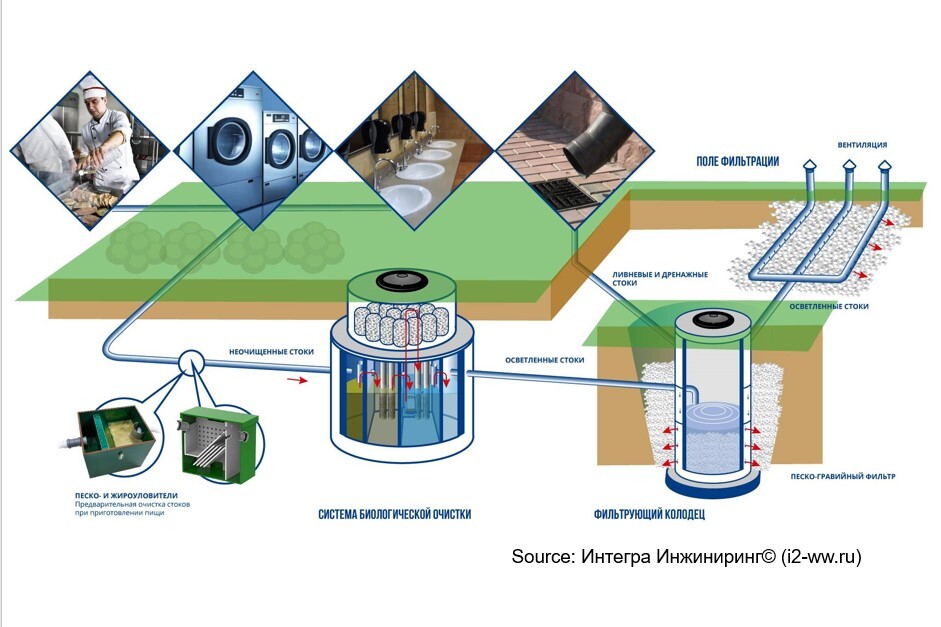
Important! The construction of an autonomous sewage system for country restaurants, cafes and catering establishments is a difficult task that is best entrusted to professional organizations.
HoReCa enterprises, regardless of their form
of ownership, size and location, must equip both the water supply system and
the sewerage system without fail. It is not allowed to discharge industrial and
household untreated effluents from the sewerage of cafes and restaurants into
open water bodies, the environment and drainage wells.
When designing, building and reconstructing sewerage systems in cafes, restaurants and hotels, strict adherence to the relevant norms and rules is necessary.
There are a number of wastewater treatment processes based on the physical and chemical removal of contaminants. These processes have varying degrees of efficiency in addition to environmental and economic disadvantages. However, in recent years, much attention has been paid to biological wastewater treatment technologies . They offer low maintenance, are easy to handle and have a comparatively lower environmental impact. For example, biofilm systems have proven to be a successful technology. If these are not applicable, activated sludge systems are recommended. For biofilm reactors, preference is given to reed or drip filters.
Due to the difference in industrial and domestic effluents, the sewerage systems of cafes and restaurants are made separate and have independent outlets to a common centralized network, and in its absence, to an autonomous one, which, as a rule, is a high-performance biological treatment system. At the same time, industrial effluents must have post-treatment systems (sand and grease traps for restaurants and cafes). The level of location of industrial effluents from the premises for cooking is made higher than faecal-economic effluents. All horizontal outlets must have inspection holes for pipe cleaning. It is also necessary to have ventilation risers to eliminate the effect of suction during salvo discharge.